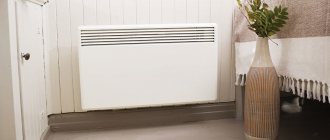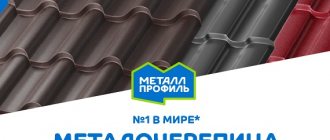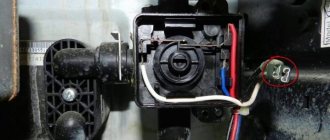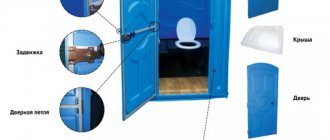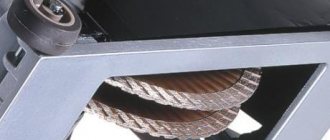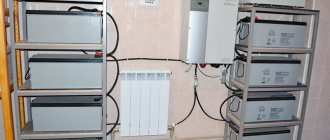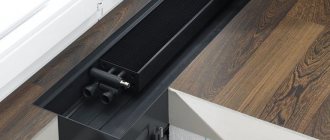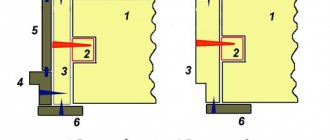Functional and practical water convectors are used if you need to create an effective and economical heating system in any room. Such equipment is reliable; it can work for decades without the slightest problem. However, to feel the benefits, you need to know the rules for choosing devices. Do you agree?
You will learn everything about choosing water-type convectors for the construction or modernization of heating systems from the article we presented. We described in detail the specifics of the convector type of heating and listed the existing types of equipment. They provided criteria on the basis of which you can make an informed choice.
How do convectors heat?
All water heating devices are traditionally designed to heat all kinds of rooms using convection - this is a physical phenomenon in which heated air rises upward, and cold masses take its place.
This process occurs continuously until the temperature equalizes in all layers of some closed volume. To ensure maximum efficiency, convectors have a special design.
They consist of the following elements:
- a pipe through which the coolant flows (this is what hot water is called);
- heat exchanger, which is metal plates (fins) placed on a pipe.
All main parts are covered with a casing; special slots (grid) allow air to circulate freely. This part of the device is designed without sharp corners or protruding parts to prevent injury.
Classification of water convectors
Modern water convectors for heating are divided into types, indicating technical characteristics. Moreover, it is not difficult to understand all the features, since they differ in only two parameters: the type of convection and the installation method.
For water-type heating devices, convection can be:
- forced;
- natural.
All natural convection equipment has lower power, lower cost and is suitable for heating a variety of small rooms with low ceilings.
In addition, it is often used as an auxiliary heating system for large premises, such as shops, or with a significant area of glazing. To solve these problems, convectors are installed near doorways and windows.
Wall-mounted convector with natural convection is the most popular type for installation in living rooms and offices
The presence of a forced convention means that the heating device is equipped with a fan, which accelerates the air circulation process, and, consequently, the rate of its heating, which ensures rapid heating of even large retail and industrial premises.
Products of this type are also successfully used for heating restaurants, offices, swimming pools and various housing with complex configurations. They create an effective heating system in cases where this is difficult to do with other types of equipment, for example, when installing traditional radiators.
Additionally, convectors are divided according to installation method. In this case, the following types are distinguished:
- wall-mounted, recently a variety of them is often used - ceiling-mounted fixtures;
- floor;
- built into the floor, sometimes the equipment is mounted instead of baseboards.
In any case, the products can be used as part of centralized and autonomous heating systems, and the coolant is exclusively liquid. And also every modern device can be used in the main or auxiliary network.
Design Features
Heating convectors designed for installation in the floor have a simple design. The basis is a heating element to which convective fins are attached.
A protective grille is installed on top. Its surface corresponds to the floor level. All other details are completely hidden. The grate does not heat up above 30°C during operation of the equipment, so there is no risk of getting burned upon contact.
Existing types of equipment
In addition to the function of fully heating the room, additional convectors are often installed near places where a comfortable microclimate is especially important, for example, near a crib.
Additional equipment must be switched on when the main heating devices cannot cope with timely heating of the air. This situation can arise due to severe frosts or poor quality work of public utilities.
Features of wall models
The most popular are wall convectors. There are several reasons for this - they are affordable in cost and easy to install. And such equipment can be placed anywhere.
The floor-standing type of convector can be installed anywhere in the room to provide comfortable conditions in the selected area
This opportunity is provided by low weight, which allows you to mount equipment even on lightweight partitions, and a large assortment of models. Most often, such a product is designed for heating using natural convection.
For more efficient operation, devices are often equipped with casings that have air channels directed in the right direction, which significantly increases productivity and heating speed.
Description of floor-standing convectors
Floor-standing units are used to heat objects where installation of wall-mounted models is not possible, for example, when glazing starts from the floor level, or large areas need to be heated in industrial buildings.
Often, products belonging to the class of floor-standing water convectors are equipped with fans, which increases productivity and heating speed, but makes the operation somewhat noisy.
A water-type floor convector is easy to install, but takes up useful space. This should be remembered at the stage of choosing a suitable model.
Built-in heating products
The so-called floor-recessed models will fit into any interior. They do not take up useful space and can heat a room of any size.
But the installation of such equipment is the most expensive, the reason: this procedure requires a niche in which the convector is installed. To attach it, you must first make a floor screed or install a reliable raised floor.
If the model is not equipped with a fan, thermal insulation must be used. This will eliminate the loss of heat that will go to heating the floor. If we neglect this requirement, the efficiency of the device will become an order of magnitude lower.
There is another important feature: a sufficient amount of dust accumulates in the casing of such devices, and quickly, which needs to be eliminated, but this is not difficult to do.
Additional advantages of built-in equipment are the longest service life among all types and a variety of standard sizes. High decorative qualities are considered an important advantage. Although the device itself is located in a niche, the protective grille is clearly visible against the background of the floor, so it is given all sorts of colors and shades.
The water convector is an effective thermal barrier and can serve as an elegant interior detail
Still, it is worth remembering that it is more convenient to install such devices during renovation or construction of a building. Since special dismantling of floors for laying pipes and installing in-floor products will be an expensive pleasure.
Advantages of convectors over radiators
Although residents of the CIS, for the most part, out of habit, use traditional cast-iron radiators or more modern bimetallic radiators for heating any premises, this trend is now changing. Convectors have a list of significant advantages, which makes them a more practical solution in a number of situations.
Their main advantages are:
- Economical - to heat identical rooms, such devices spend only a quarter of the thermal energy that radiators need.
- High efficiency - in many cases, the products are capable of providing full heating of all kinds of rooms at a coolant (water) temperature of 50°C. According to the standards, conventional radiators at the specified water temperature can heat the room well when it is only 5 °C outside, and at -5 °C it will be necessary to heat the coolant to 78 °C.
- Rapid heating of rooms - thanks to the convention, heating of any room occurs an order of magnitude faster than when heating with radiators. Because they simply emit heat. In addition, the speed of heat propagation is facilitated by the rapid heating of the heat exchanger (pipes, fins). For example, such a procedure with these devices occurs many times more quickly than with cast iron products that are familiar to everyone.
In addition, all convectors are easy to maintain, light weight, compact, and are famous for their high fire safety. Our recommended article will help you get an idea of the advantages of a convector compared to a fan heater.
Their only source of possible danger may be the fan. But it is not installed on all models, and is also low-voltage. Such equipment rarely becomes a source of trouble. The surface of its casing is always cool, which will prevent burns.
Convectors are increasingly used in apartments as main or additional heating devices. In the photo, the built-in device serves as a thermal barrier at the entrance to the balcony
The product is not without its shortcomings, but the list of them is quite short. Thus, the convention creates air currents that contribute to greater dustiness in the premises.
And moving air masses can create a slight draft. This phenomenon is not critical, but undesirable for people suffering from various types of colds. These disadvantages are compensated by an important advantage - convectors never dry out the air.
The biggest disadvantage is the uneven heating of rooms with very high ceilings. The reason lies in the fact that under the influence of the convention, warm air accumulates under the ceilings, and can only descend when cooled, which does not contribute to creating a comfortable temperature.
The same situation will arise if the heated room has moderate-height ceilings, but forced ventilation is used simultaneously with heating.
Frame
Most often, steel is used for the manufacture of modern convectors. The design of the housing can be very diverse, so there are usually no problems with choosing a heater for a specific style of room. There are special fastenings (brackets) on the body of wall-mounted modifications: they make it possible to remove the device from time to time for maintenance.
In some cases, the protective steel box of the convector is equipped with adjustable blinds on the sides: by changing their angle, you can adjust the direction of air flow. This design solution allows for volumetric distribution of heat in the room, which makes its heating more uniform. To avoid underheating, when choosing a convector, it is recommended to leave some power reserve (especially if it is installed in a corner room).
How to make the right choice?
To get the expected result, a potential buyer must find out whether it is possible to install convectors in the selected room. It is necessary to take into account whether forced ventilation will be used to create the desired microclimate and whether the ceiling height is acceptable.
You should also make sure that it is technologically possible to supply the necessary equipment. For example, in many cases it is not practical to place built-in devices in residential premises due to the complexity of installation.
Power calculation is a mandatory procedure
If convectors can be installed indoors, the power needs to be calculated. This procedure cannot be ignored - otherwise it will be impossible to create the desired microclimate. That is, it will not heat a home, office or any other object. Another extreme is often encountered - heat, which also will not please the buyer.
To perform the calculation yourself, the following formula is suitable: for every 10 square meters of any room there must be at least a kilowatt of thermal power. But you need to understand that not everything is so simple - this formula will only allow you to determine the average value.
The design of water convectors is simple and reliable, which ensures their service life for decades
Water convectors should be selected with a twenty percent reserve. Better yet, invite a specialist who will carry out an accurate calculation taking into account the heat losses of the building and room. That is, all the features of the object to be heated will be taken into account. This includes glazing area, ceiling height, etc.
The specialist will also be able to indicate the exact location of the devices and suggest where it is best to install additional equipment.
Material of manufacture is always important
When choosing, you should pay attention to the material of manufacture - it affects efficiency, cost, durability and even decorative qualities. Moreover, the last point has become one of the most important today.
For example, devices can be:
- steel;
- aluminum;
- bimetallic - in this case, two types of metals are used for manufacturing.
Copper is also often used. Bimetallic and aluminum devices are considered the most effective today. But steel devices also have a significant advantage - their cost is the most affordable.
The built-in convector can fit perfectly into any interior thanks to the rich color palette available from most equipment manufacturers
It is worth paying attention to the decorative elements of the equipment; they can be different: metal, wood. And for painting, powder paints of various colors are used, which makes the offer even more diverse.
What else to pay attention to
Each heating system (centralized, autonomous) has an operating pressure, in addition, there is another characteristic - test pressure, so convectors must be purchased taking into account such values.
Particular attention should be paid to the test pressure, the reason: it is an order of magnitude greater than the working pressure. The important point is that in different systems such characteristics vary significantly.
For example, old Khrushchev systems are tested under pressure of 5-7 atmospheres. This parameter in new building systems when testing performance can reach an impressive 12-15 atmospheres. Accordingly, the capabilities of convectors must meet the specified values.
If this is not provided for, then damage to the equipment cannot be avoided. As a result, you will have to spend money on buying a new one, repairing a heated room, and in the worst case, compensating for damage to neighbors.
Operating temperature and dimensions
You should also pay attention to the maximum coolant temperature that the convector can withstand. For example, if an autonomous heating boiler is capable of heating water to 95 °C, then there is no need to buy products that can only operate at 70 °C.
An important characteristic is the size of the devices, and their correct selection will allow you to heat the room more efficiently, avoid glass fogging and other problems. For convenience, the industry produces convectors of different depths, lengths, and heights.
The equipment can also be vertical or horizontal, which allows it to be placed almost anywhere, but the buyer must decide on the size.
The size of the convector can be any, the main thing is to choose it correctly, otherwise installation will be difficult
Shut-off valves and thermostats will increase efficiency and create the most comfortable microclimate. This equipment allows you to turn off part of the device at high temperatures in a heated room. Moreover, this happens in automatic or manual mode. But there is also a drawback: all kinds of additional equipment can significantly increase the cost of the product itself.
How not to get confused by technical specifications?
Although all manufacturers include passports with their devices, which indicate their names and power, people often make mistakes in their choice. The reason lies in the fact that an entire line of products consisting of several dozen products can be sold under almost the same abbreviation.
A clear confirmation of this is the family of popular convectors KSK-20, where more than 40 units are produced under the same name, differing only in size.
Moreover, there are products of the same size, in which the plates (ribs) intended for heat exchange are placed at a greater distance from each other, and this significantly reduces productivity. And such subtleties sometimes confuse potential buyers, who may make the wrong choice in the variety of products.
You also need to remember that devices of the same power and size can be flow-through or end-of-line. Convectors belonging to the first option can operate in any heating systems (autonomous, centralized), and products classified in the second group are built only into autonomous systems.
All of the above indicates that the buyer will need some theoretical knowledge to make the right choice.
A heating element
Electric convectors are equipped with various heating elements. The most inexpensive solution is steel products, found in the cheapest appliances. The high temperature of the heating coil (up to +160 degrees) allows the room to quickly warm up. However, spirals of this type have a low degree of safety: phenomena such as the accumulation of dust or accidentally ingress of water can cause the device to catch fire. The popularity of spiral convectors is explained, first of all, by their low cost. Some manufacturers additionally equip the device housing with special fans, which, in combination with a high-temperature coil, increases the heating intensity.
More expensive models are equipped with safe low-temperature coils that heat up only to +100 degrees. Elements of this type have the form of dissipative radiators made of aluminum with a built-in steel pipe. A special heating filament is located inside this tube. Thanks to the aluminum housing, heating efficiency is noticeably increased. In some models, instead of one, two tubes are used, which allows you to adjust the operation of the heating block.
The different degrees of expansion exhibited by aluminum and steel provoke a gradual decrease in the reliability of the connection between the heating tube and the housing. As a result, this can lead to a complete breakdown of the connection between them. As a result, there is a danger of local overheating of the tube and damage to the heating element. Manufacturers of convection equipment are constantly searching for a solution to this problem.
RX-Silence heating devices, developed and patented by NOIROT (France), are particularly unique. The innovative design of these convector boilers lies in the complete tightness of the silumin body, where magnesium powder is used to seal the nichrome heating filament. The expansion coefficient of the materials used has very similar values, which makes it possible to significantly reduce energy consumption and increase the service life of the convector to 15-17 years.
Review of popular models
The market offers an impressive number of models of all types of convectors from various manufacturers. Moreover, domestic companies are actively operating in this area. For example, in the niche of inexpensive heating equipment they are traditional leaders.
So, if the buyer needs reliable, affordable wall-mounted devices, then he should buy the KSK-20 products, proven by time and a large number of users, which are produced by the famous Tolyatti plant. He has been making popular and inexpensive heating units for decades.
The KSK-20 convector is an efficient, reliable and inexpensive heating device
These convectors can cover the needs of all categories of users, as they come in different capacities, sizes, and configurations. For example, the length of the devices is in the range of 60-160 cm, and the weight starts from an insignificant 8 kg, which allows you to place the devices on any walls or partitions without the risk of damage.
The power of such heating equipment ranges from 0.4-2 kW, which allows you to heat both a small living room and a large industrial or commercial premises. High-quality steel is used for manufacturing, which ensures the device has a service life of at least 25 years.
Such convectors can be used in any heating systems, because they can withstand exposure temperatures of up to 150 °C and operating pressures of up to 10 atmospheres. The high-quality powder paint that covers all products protects the device from minor damage and gives it a modern, pleasing appearance.
The only minor drawback of the KSK-20 is the absence of brackets in the kit that are used to attach it to a wall or other vertical surface. Some buyers pay attention to the poverty of the color palette - heating equipment, most often, can only be purchased in traditional white or gray colors, so it does not always fit perfectly into the interior.
If you need a more beautiful device, then you should turn to the product line of another domestic manufacturer - Techno. Thus, at his Moscow plant, various colors are used for decoration and products are decorated with various structural elements. For example, the Vita Bench KBZ model is in demand among buyers.
Its main feature is execution. The floor-standing unit is a bench, and the wooden elements can even be made from popular and valuable types of wood, which makes it a decoration.
At the same time, Vita Bench is a durable and efficient convector, which the manufacturer equips with a thermostatic valve. But the disadvantage of the presented model is the price - it is significantly higher than the KSK-20, which is similar in power.
Covectors can have decorative qualities and serve as decoration in hotels, offices, and homes.
In recent years, another Russian manufacturer of convectors has become known - Varmann. Reason: its products are distinguished by functionality, practicality, and high decorative qualities.
Thus, its line of built-in Qterm HK devices is equipped with air channels and tangential fans that allow air to be drawn only from the desired side. This function significantly increases efficiency and economy.
The fan speed is regulated by a microprocessor, and if necessary, the convector can be connected to a smart home system or using a control panel. The reason for this is simple - thermal power depends on the fan performance
High-quality materials used in manufacturing make it possible to withstand impressive pressure during the pressure testing period, reaching up to 16 atmospheres, and work stably with coolant heated to 90 °C.
The following article, dedicated to this interesting issue, will introduce you to guidelines for choosing a convector-type heater.
Principle of operation
Heating a room using them occurs as follows. Cold air enters through a special grille to the radiator, heats it up and exits back into the room through the same grille. By circulating in this way, it ensures that the temperature in the room rises to the desired level.
Battery design in the floor Source yms.com.ua
To make a radiator grille in the floor, wood or metal painted in different colors can be used. Those made of metal are more wear-resistant, but at the same time, with strong heating, they can cause discomfort if you step on a bare foot, while the user is guaranteed not to get burned. Wooden ones can be damaged by strong force or pressure. Grilles can have different sizes and appearance, which allows them to be harmoniously combined with a particular room interior.
External battery grille in the floor Source carrera.ua
Installation is carried out close to the windows. In this case, a relief valve is always installed, connected to the radiator. It allows you to remove air from the system, which significantly increases the efficiency of radiators. Special regulators make it possible to set the required temperature in the room.
Conclusions and useful video on the topic
In this material, a specialist shares information on how to calculate the power of heating devices:
This video clearly shows how to install built-in convectors and what should be taken into account:
Convectors are a profitable and practical alternative to conventional radiators and, no less important, affordable. But the buyer must understand that the possibility of creating a comfortable microclimate in a home, office or workplace depends on his choice, which can be made with theoretical knowledge about heating devices.
If you don’t want to waste time getting them, then you can turn to specialists, this will help you avoid useless financial expenses.
We will be glad to read your story about choosing a water convector. Share the criteria based on which you personally made the purchase. Please leave comments in the block below, ask questions, post photos on the topic of the article.

